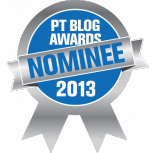 Evidence-based clinical practice consists of the use of assessment strategies and treatment interventions that have scientific evidence to support their use. The harsh reality is that although there are a myriad of hypothetical constructs underlying many assessment strategies and treatment interventions, many (if not most) of these are not yet supported by both the physiology literature (on the cellular level) and the clinical literature (on the applied level).
Evidence-based clinical practice consists of the use of assessment strategies and treatment interventions that have scientific evidence to support their use. The harsh reality is that although there are a myriad of hypothetical constructs underlying many assessment strategies and treatment interventions, many (if not most) of these are not yet supported by both the physiology literature (on the cellular level) and the clinical literature (on the applied level).
On a daily basis, clinicians are faced with a significant clinical and ethical decision: to utilize evidence-based clinical approaches, or not. Is non-evidence-based practice not only a clinical issue, but a broader ethical issue as well?
Medical ethics are a cornerstone of professional behaviors. Many professional associations have ethics statements for their members. For example, the American Medical Association’s Code Of Medical Ethics notes that
“A physician shall be dedicated to providing competent medical care … A physician shall continue to study, apply, and advance scientific knowledge … A physician shall, while caring for a patient, regard responsibility to the patient as paramount.”
Add to this the words of the Hippocratic Oath, which state
“First, do no harm. Second, revere the healing powers of nature”.
The American Physical Therapy Association also has a Code of Ethics for its’ members that includes the following passages:
“Physical therapists shall demonstrate independent and objective professional judgment in the patient’s/client’s best interest in all practice settings … Physical therapists shall demonstrate professional judgment informed by professional standards, evidence (including current literature and established best practice), practitioner experience, and patient/client values”.
It is obvious that evidence-based practice is an important aspect of these two professional associations’ codes of ethics. I would assume that most health care providers have a similar ethical code.
But compare these Codes to the basic principles of medical ethics to find the incongruities. There are four primary principles that provide a foundation: respect for autonomy (“informed consent”), nonmaleficence (“first, do no harm”), beneficence (“taking actions that serve the best interests of the patient”), and justice (“giving to each that which is his due”). Non-evidence-based practice involves the utilization of assessment and treatment strategies that have little to no scientific support. My question is this: if you know that evidence does not exist for a treatment, is it unethical to apply that treatment to a patient? Can you knowingly provide a treatment that has little to no effect on the patient, and do so within the code of ethics of your health care profession?
It would appear that non-evidence-based practice suffers from an inability to either confirm or refute nonmalificence. How do we know that this treatment doesn’t cause harm? Worse yet, and perhaps more important, non-evidence-based practice suffers from an inability to confirm or refute beneficence. How can we truly stand by the statement that the treatment is serving the best interests of the patient when there is no evidence to substantiate it?
If efficacy isn’t a good enough reason to pursue evidence-based practice, then perhaps the ethics of the issue should provide an even greater need to pursue it. As clinicians, it is our ethical and clinical responsibility to do so – for the benefit of the patient, and for our own professional integrity.
Photo credits: Wikipedia

 "Running Injuries: Etiology And Recovery- Based Treatment" (co-author Bridget Clark, PT) appears in the third edition and fourth editions of "Clinical Orthopaedic Rehabilitation: A Team Approach" by Charles Giangarra, MD and Robert C. Manske, PT.
"Running Injuries: Etiology And Recovery- Based Treatment" (co-author Bridget Clark, PT) appears in the third edition and fourth editions of "Clinical Orthopaedic Rehabilitation: A Team Approach" by Charles Giangarra, MD and Robert C. Manske, PT.
 Allan Besselink, PT, DPT, Ph.D., Dip.MDT has a unique voice in the world of sports, education, and health care. Read more about Allan here.
Allan Besselink, PT, DPT, Ph.D., Dip.MDT has a unique voice in the world of sports, education, and health care. Read more about Allan here.
 Top 5 finalist in three categories: "Best Overall Blog", "Best PT Blog" and "Best Advocacy Blog".
Top 5 finalist in three categories: "Best Overall Blog", "Best PT Blog" and "Best Advocacy Blog".